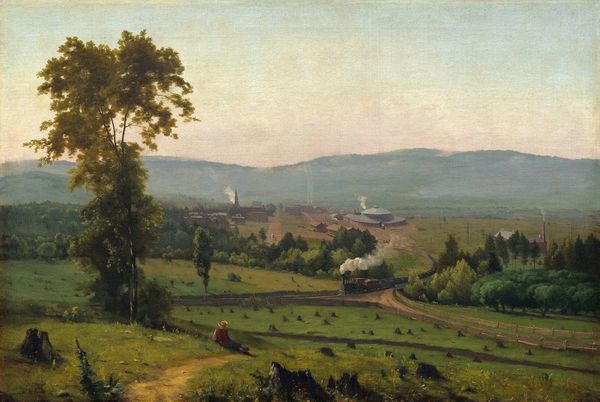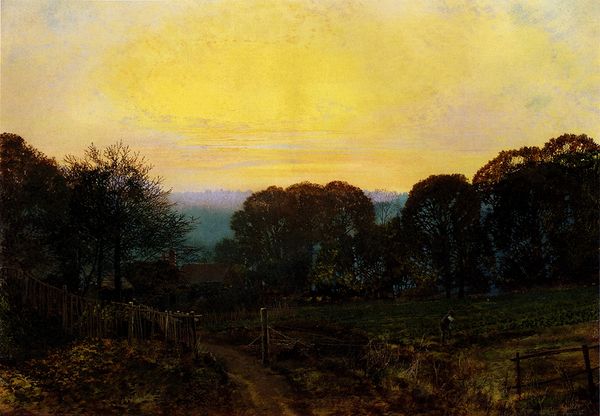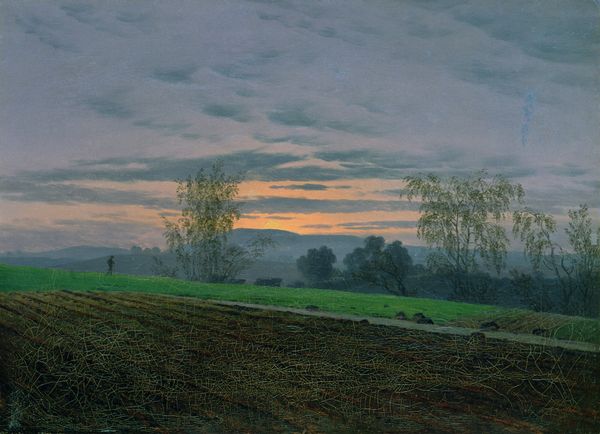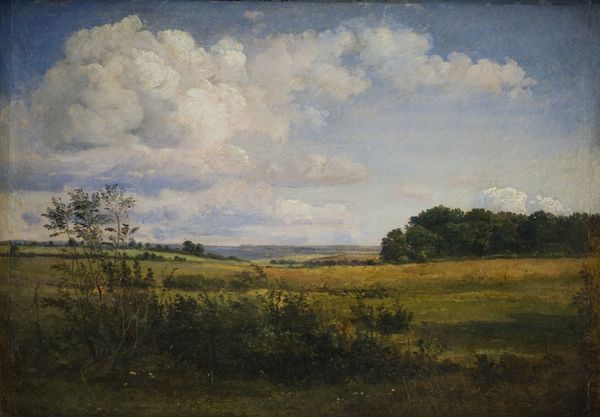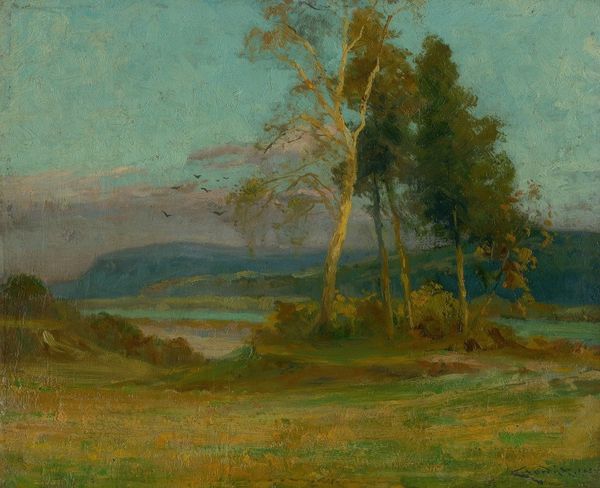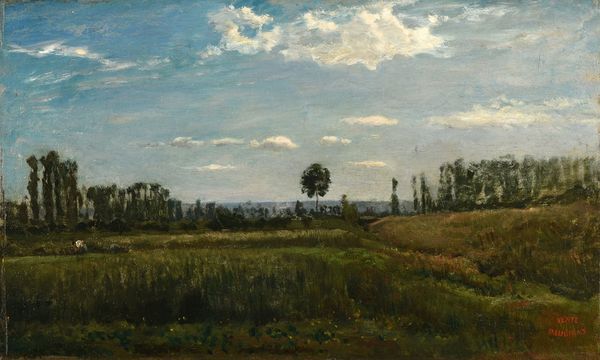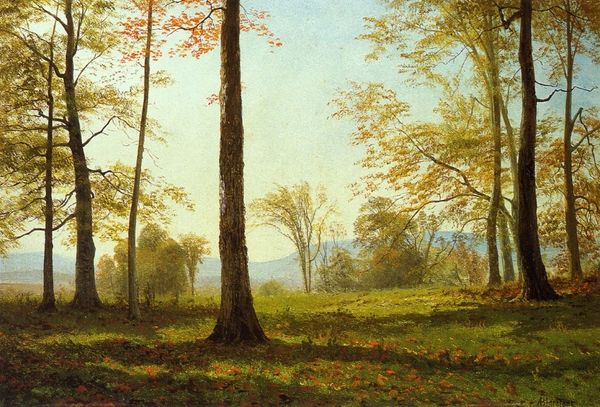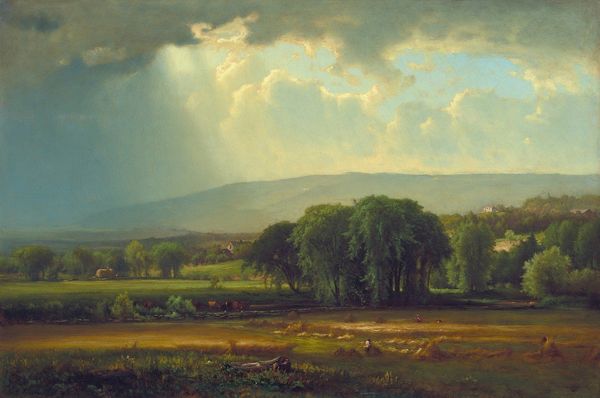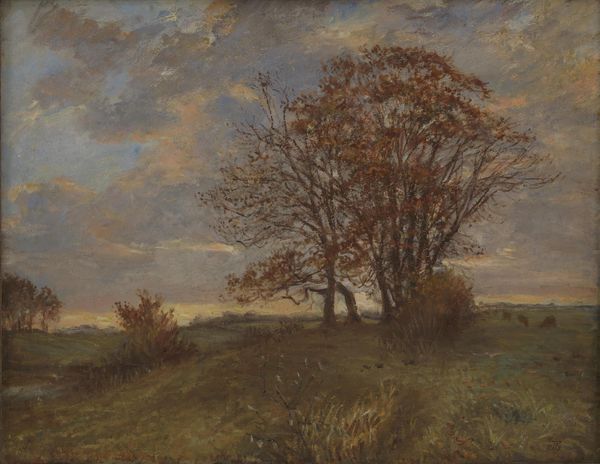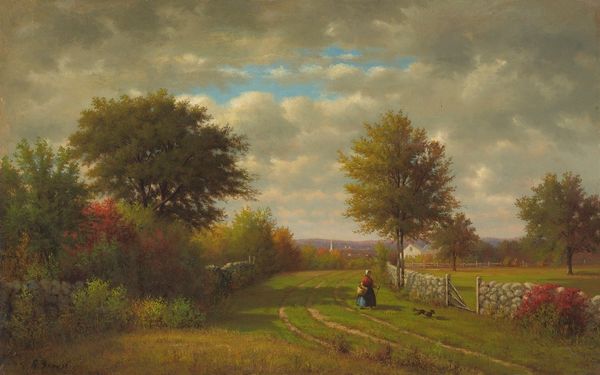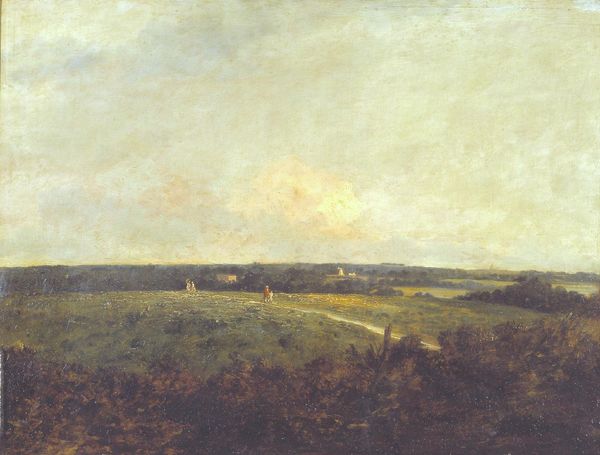
Dimensions: 47.63 x 68.58 cm
Copyright: Public domain
Curator: Looking at this canvas, one can’t help but feel a deep sense of calm. The way the light filters through, it's just... ethereal. Editor: Indeed. This is Albert Bierstadt’s "New England Landscape," painted in 1889, rendered in oil. It's very characteristic of the Hudson River School's plein-air painting techniques. But what resonates beyond just skillful landscape rendering, for you? Curator: Oh, I feel like I'm walking through that field. The muted gold of the sky blending into the rolling hills gives me such a warm feeling, even a bit melancholic—almost as if the sun is setting on a chapter of my life. Does that make sense? Editor: It absolutely does. It's important to situate such idyllic portrayals within their socio-political reality. The late 19th century was marked by accelerating industrialization and urbanization. So, these landscape paintings really provided a comforting retreat, reflecting a yearning for simpler times, although that simpler life usually excludes narratives from workers or indigenous inhabitants. Curator: That’s a great point. It’s easy to get lost in the pretty picture and forget about the bigger story. Thinking of this longing for an idealized past—doesn't that risk romanticizing colonial expansion into the 'untouched' wilderness? Editor: Precisely. Hudson River School paintings are undoubtedly visually stunning, but it’s imperative to acknowledge that such works can sometimes overshadow the environmental and societal consequences of westward expansion—the brutal treatment of native people, the commodification of nature. It speaks to whose “Eden” is being visually celebrated. Curator: I see your point. Maybe there's a tension, even in something as outwardly serene as this canvas, that's just ripe for critical reflection, don't you think? Like, it’s beautiful, but... beauty can be deceiving, almost like a mirage sometimes. Editor: Exactly! This piece shows us both the beauty of artistic technique and the vital necessity to contextualize that beauty within history. A crucial dance between form and broader social dialogues. Curator: Well said. I'll never look at a landscape the same way again! Editor: And hopefully, we can start to recognize the narratives of erasure within celebrated works and become more conscious viewers overall.
Comments
No comments
Be the first to comment and join the conversation on the ultimate creative platform.

